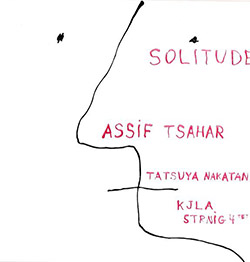
Alto saxophonist/composer Tsahar further investigates what 3rd stream music left behind, a gorgeous exploration of sound and movement with percussionist Nakatani and the KJLA String 4tet.
In Stock
Quantity in Basket: None
Log In to use our Wish List
Shipping Weight: 3.00 units
EU & UK Customers:
Discogs.com can handle your VAT payments
So please order through Discogs
Sample The Album:
Assif Tsahar-reeds
Tatsuya Nakatani-percussion
Katt Hernandez-violin
Jean Cook-violin
Ljova-viola
Audrey Chan-cello
Click an artist name above to see in-stock items for that artist.
UPC: 00695269603620
Label: Hopscotch Records
Catalog ID: HOP 36
Squidco Product Code: 5447
Format: CD
Condition: New
Released: 2005
Country: USA
Packaging: Cardstock Gatefold Sleeve
Recorded by Assif Tsahar.
"The first cooperative venture between Israeli reed man Assif Tsahar and Japanese conceptual percussionist Tatsuya Nakatani, both based in New York, focused on investigating the more abstract regions of free jazz (Come Sunday, Hopscotch, 2004). Tsahar exerted more control than sweaty power, and Nakatani proved himself a most singular and versatile percussionist. Nakatani hardly ever uses a regular drum kit and is very close in spirit to another sonic master, German percussionist Paul Lovens. On Solitude, with the KJLA string quartet, they expand their sonic studies further into free-form tone poems.
Out of the nine tracks on Solitude, eight are group improvisations, and the title track that concludes this disc is a Duke Ellington standard. The first track, the tender "Love Is," sets the dark tone for this release. Tsahar's somber bass clarinet soars over Nakatani's murmuring bells and the drone of the strings. The sonorities on the longest track, "Unmoving," are more abstract, and the strings sometimes sound as if they are imitating overtone throat-singing. They add to Tsahar's breathy blowing on the tenor sax and Nakatani's distant drumming until all the tension climaxes in muscular interplay. "Sand Between a Toe" is more playful and the sax and strings play a sort of hide-and-seek game.
The tone poem "The Epistemology of Loss" (dedicated to poet John Berryman, after one of his well-known poems, "The Ball Poem") and the following track, "Of Amazing Most Now" (dedicated to poet e.e. cummings, after his famous poem "i thank You God for most this amazing"), are dense contemplations that capture the realization of loss in the Berryman poem and cummings' sensory bewilderment.
"Blue Sun" retains the same tense, dark atmosphere. The tones become more clearer on "Falling," where Nakatani's tap drumming interlocks with the pizzicato strumming of the strings while Tsahar's bass clarinet navigates the turmoil into more coherent lines. Only then does violinist Audrey Chen manage to stand out with her exceptional technique. This continues on the free-improv "By and By," where all the members of the string quartet are much more prominent. The strings on Ellington's "Solitude" sound a bit dry and detached, but Tsahar contrasts this deficiency with a rich and soulful tone.
Solitude managse to draw a cohesive aesthetic that is very similar in spirit to earlier high-energy efforts by Tsahar, with more colors and shades, more control over expressiveness—but still same intelligence and passion. It may demand more from the listener, but it guarantees an exceptional reward."-Eyal Hareuveni, All About Jazz
Get additional information at All About Jazz
Artist Biographies
• Show Bio for Assif Tsahar "Assif Tsahar (born Israel, June 11, 1969) is an Israeli tenor saxophonist and bass clarinetist. He lived in New York City from 1990 to the early 2000s, returning to Israel. He has performed with Cecil Taylor, Butch Morris, William Parker, Mat Maneri, Hamid Drake, Peter Kowald, Susie Ibarra, Rashied Ali, Warren Smith, Wilbur Morris, Le Quan Ninh, John Tchicai, Fred Anderson, Rob Brown, Roy Campbell, Gerald Cleaver, Agusti Fernandez, Ken Vandermark, Kent Kessler, Joe Daley, Herb Robertson, Cuong Vu, Chris Jonas, Ori Kaplan, Oscar Noriega, Roman Stolyar, Alex Harding, Steve Swell, Cooper-Moore, and Tom Abbs He founded the label Hopscotch Records in 1999. In 2006 he opens the music club Levontin7 with Daniel Sarid in Tel Aviv. " ^ Hide Bio for Assif Tsahar • Show Bio for Tatsuya Nakatani "Tatsuya Nakatani. Acoustic Sound Artist, Master Percussionist. b. 1970, Osaka Japan Tatsuya Nakatani is an acoustic sound artist and master percussionist originally from Osaka, Japan. He has released over eighty recordings in North America and Europe. Residing in the USA since the mid-nineties, he has performed countless solo percussion concerts and has collaborated with hundreds of artists in international music festivals, university concert halls, art museums and independent venues. Infamous for his constant touring, Nakatani criss-crosses the country every year inspiring audiences with his pioneering sound. In addition to his solo performances, he conducts the Nakatani Gong Orchestra (NGO), a mobile community engagement project which organizes local ensembles performing on multiple bowed gongs.Nakatani teaches master classes and workshops at universities, giving students an opportunity to share his unique musical approach and philosophy for creating visceral, non-linear music. He has created his own instrumentation, effectively inventing many instruments and extended techniques. Utilizing drums, gongs, cymbals, singing bowls, wooden sticks, metal objects, and the bows and mallets he handcrafts in his Kobo; he creates an intense, intuitively primitive, expressive music that defies genre. His work references improvised-experimental music, free jazz, and noise, while still retaining the sense of space and beauty found in traditional Japanese folk music." ^ Hide Bio for Tatsuya Nakatani • Show Bio for Katt Hernandez "Katt Hernandez is a composer, improvisor, violinist, producer and artistic researcher. She moved to Stockholm in 2010, and rapidly began working with many artists and new music organizations. In addition to solo violin work, she co-founded The Schematics and Deuterium Quartet, and has worked with a host of musicians and others in Europes's improvised, electronic and experimental music and sound art scenes. After earning a Masters degree in composition from Sweden's Royal College of Music, she began a PhD in Music at Lund university in 2015, and was also employed at the Royal College of Music as part of Klas Nevrin's 3-year research project Music in Disorder. She is currently in the Fire! Orchestra, led by Mats Gustafsson, as well as Lotte Anker's research project Sub-Habitat at the Rhythmic Music Conservatory in Copenhagen. Her work has been featured on festivals, series, museums, conferences and radio stations throughout the world. Before leaving the U.S., Katt was a 13 year veteran of experimental music scenes on the east coast, where she worked with a vast array of musicians, dancers, visual artists, puppeteers, film makers and performance artists, in venues ranging from underground urban art spaces to ivy league concert halls." ^ Hide Bio for Katt Hernandez • Show Bio for Jean Cook "Jean Cook, violinist and Treasurer Jean Cook has been playing violin since 1979. She is part of the 11tet, a New York based jazz composers workshop, and is a founding member of the PnR Salon in Washington, DC, which brings together post-punk rockers and classically trained musicians. In 2000, she appeared at the Kennedy Center's Hip-Hop Festival and the Smithsonian Folklife Festival with the Hip-Hop Philharmonic, a DC based live hip hop orchestra. Occasionally she plays around New York with the Dixieland group "Wriggle's Red-Hot Agate-Cracking Jassers". She currently records and performs with Beauty Pill, Gena Rowlands Band, Ida, Jenny Toomey, and Jon Langford/Ship and Pilot. Jean produced and hosted "The Twentieth Century String Quartet" on WKCR-FM, New York from 1995-1996. She was the publicist for Washington Performing Arts Society for three years before moving to New York in 2000. Recently, she curated a western classical recital series for WPAS and produced the multimedia DIY opera, The Nitrate Hymnal. She currently works for a political group called Air Traffic Control that helps musicians to be more effective in the current election cycle." ^ Hide Bio for Jean Cook
7/9/2025
Have a better biography or biography source? Please Contact Us so that we can update this biography.
7/9/2025
Have a better biography or biography source? Please Contact Us so that we can update this biography.
7/9/2025
Have a better biography or biography source? Please Contact Us so that we can update this biography.
7/9/2025
Have a better biography or biography source? Please Contact Us so that we can update this biography.
Track Listing:
1. Love Is 5:52
2. Unmoving 11:02
3. Sand Between A Toe 3:02
4. The Epistemology Of Loss (For John Berriman) 7:39
5. Of Amazing Most Now (For E. E. Cummings) 6:44
6. Blue Sun 5:48
7. Falling 5:34
8. By And By 5:01
9. Solitude 6:06
Jazz
Improvised Music
NY Downtown & Metropolitan Jazz/Improv
November 2005
Hopscotch Records
Stringed Instruments
Sextet Recordings
Jazz
Improvised Music
NY Downtown & Metropolitan Jazz/Improv
November 2005
Hopscotch Records
Stringed Instruments
Sextet Recordings
Search for other titles on the label:
Hopscotch Records.


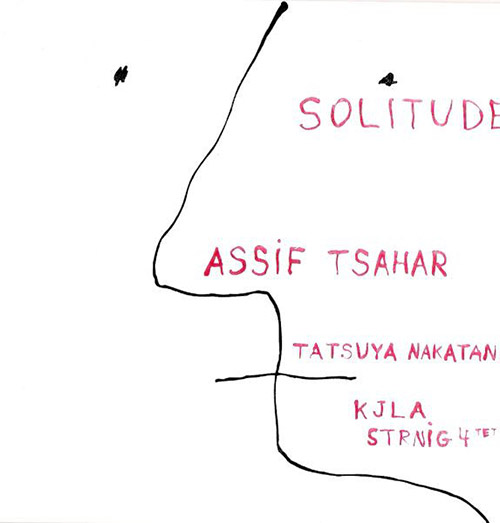
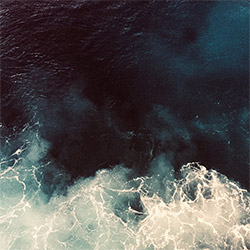
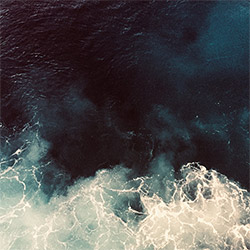
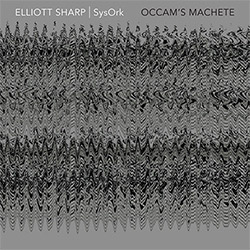

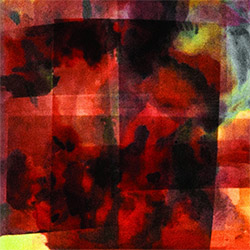
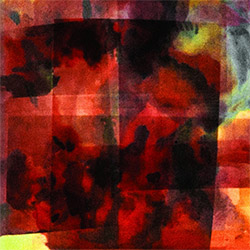
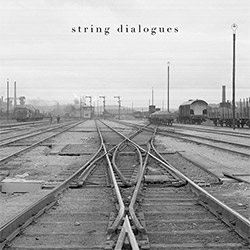
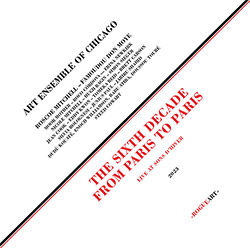
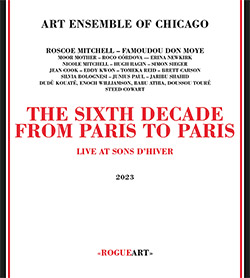
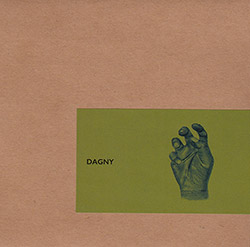

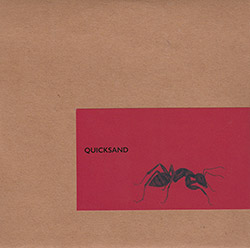

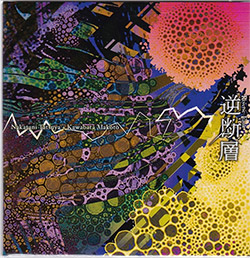
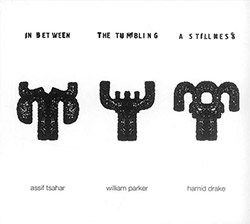
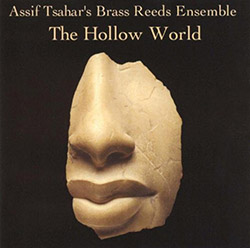
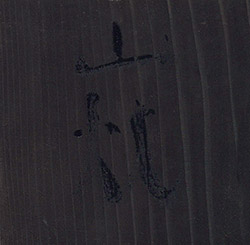
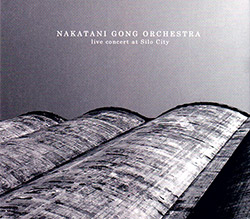
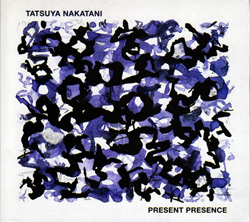

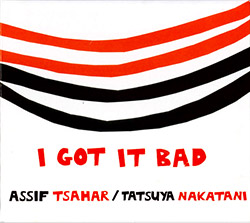


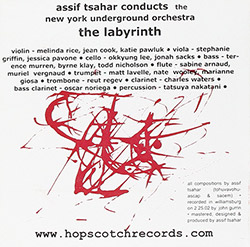

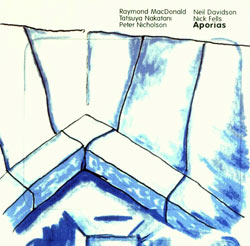


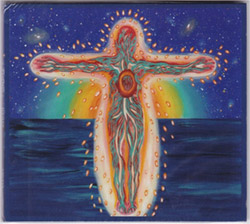

![BlueRing Improvisers: Materia [2 CDs]](https://www.teuthida.com/productImages/misc4/36513.jpg)

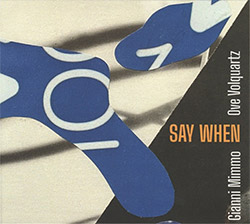



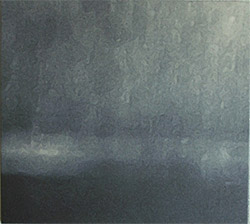


![Wheelhouse (Rempis / Adasiewicz / McBride): House And Home [VINYL]](https://www.teuthida.com/productImages/misc4/36462.jpg)
![+DOG+: The Light Of Our Lives [2 CDs]](https://www.teuthida.com/productImages/misc4/36009.jpg)


![Parker, Evan / Jean-Marc Foussat: Insolence [VINYL]](https://www.teuthida.com/productImages/misc4/36398.jpg)



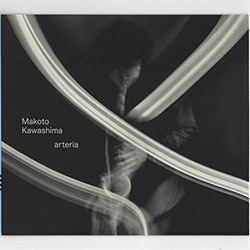


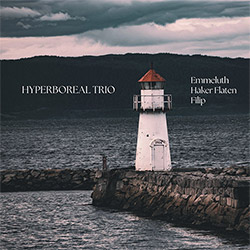


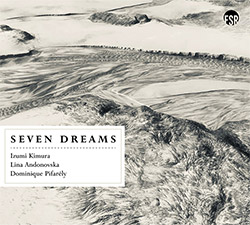
![Deupree, Jerome / Sylvie Courvoisier / Lester St. Louis / Joe Morris: Canyon [2 CDs]](https://www.teuthida.com/productImages/misc4/36404.jpg)
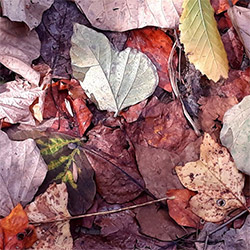


![Eventless Plot | Haarvol: The Subliminal Paths [CASSETTE + DOWNLOAD]](https://www.teuthida.com/productImages/misc4/36232.jpg)
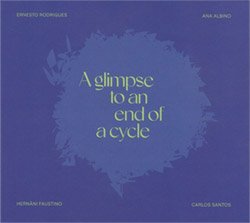
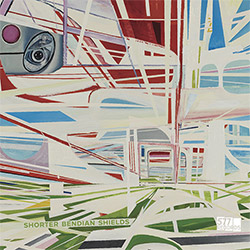
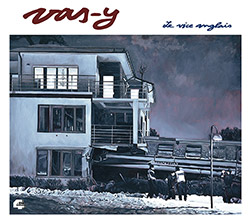


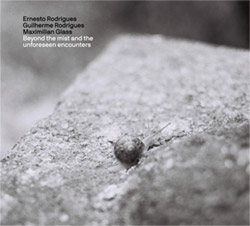
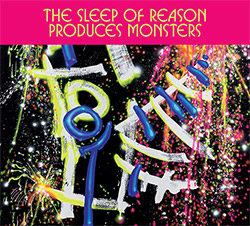

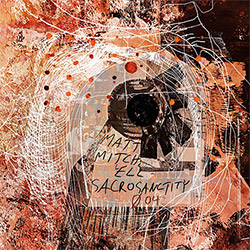

![Eventless Plot | Francesco Covarino: Methexis [CASSETTE + DOWNLOAD]](https://www.teuthida.com/productImages/misc4/36231.jpg)
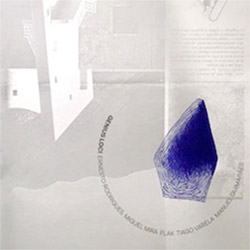
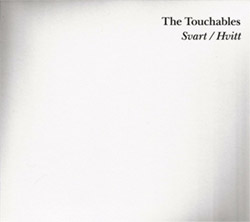

![Das B (Mazen Kerbaj / Mike Majkowski / Magda Mayas / Tony Buck): Love [VINYL]](https://www.teuthida.com/productImages/misc4/36329.jpg)

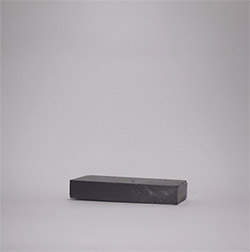
![Eternities: Rides Again [CASSETTE]](https://www.teuthida.com/productImages/misc4/36247.jpg)
![Lopez, Francisco: Untitled (2021-2022) [2 CDs]](https://www.teuthida.com/productImages/misc4/36438.jpg)
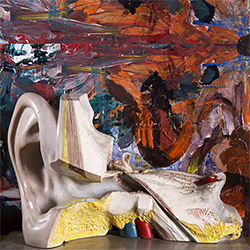

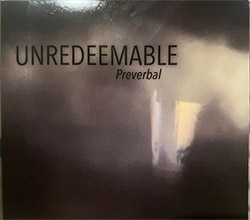

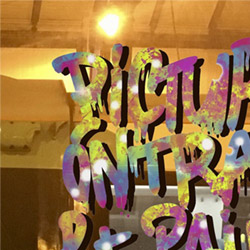
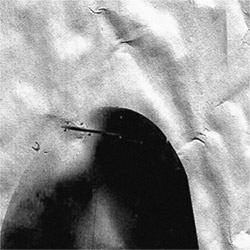
![Money : Money 2 [2 CDs]](https://www.teuthida.com/productImages/misc4/35894.jpg)


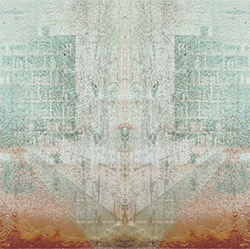
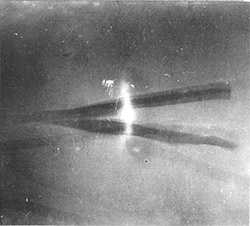
![Klinga, Erik: Elusive Shimmer [VINYL]](https://www.teuthida.com/productImages/misc4/36258.jpg)
![CHANGES TO blind (Phil Zampino): Volume 9 - I Wave on a Fine Vile Mist [CD + DOWNLOAD]](https://www.teuthida.com/productImages/misc4/36061.jpg)

![Wallmart / Rubbish: Asset Protection [split CD]](https://www.teuthida.com/productImages/misc4/35900.jpg)


![+Dog+: The Family Music Book Vol. 5 [2 CDs]](https://www.teuthida.com/productImages/misc4/35897.jpg)
![Kuvveti, Deli : Kuslar Soyledi [CASSETTE w/ DOWNLOAD]](https://www.teuthida.com/productImages/misc4/36107.jpg)

![Brown, Dan / Dan Reynolds: Live At The Grange Hall [unauthorized][CASSETTE]](https://www.teuthida.com/productImages/misc4/36245.jpg)
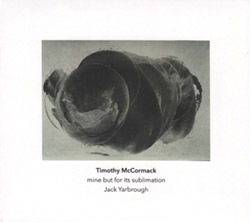

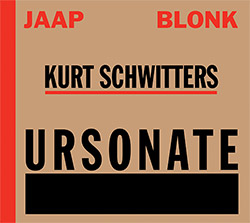
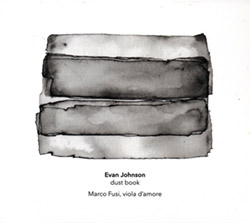




![Palestine, Charlemagne / Seppe Gebruers: Beyondddddd The Notessssss [VINYL]](https://www.teuthida.com/productImages/misc4/36206.jpg)
![Palestine, Charlemagne / Seppe Gebruers: Beyondddddd The Notessssss [NEON GREEN VINYL]](https://www.teuthida.com/productImages/misc4/36207.jpg)
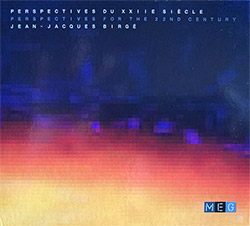
![Laubrock, Ingrid: Purposing The Air [2 CDs]](https://www.teuthida.com/productImages/misc4/35639.jpg)
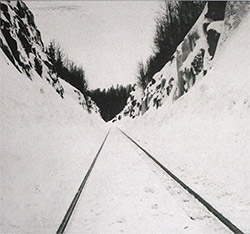
![Yoko, Ono / The Great Learning Orchestra: Selected Recordings From Grapefruit [2 CDs]](https://www.teuthida.com/productImages/misc4/35841.jpg)
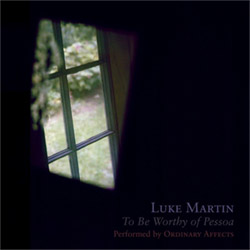
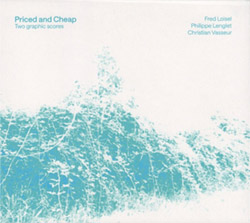
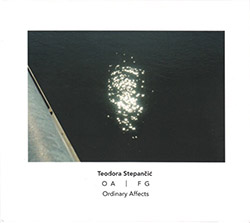


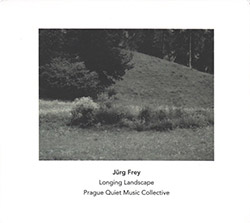

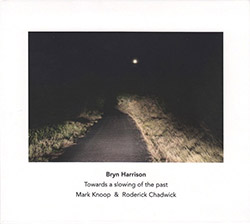

![Zorn, John / JACK Quartet: The Complete String Quartets [2 CDs]](https://www.teuthida.com/productImages/misc4/35609.jpg)
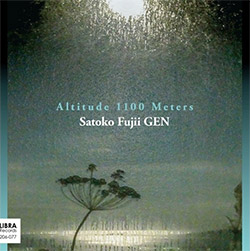
![Lonsdale, Eden: Dawnings [2 CDs]](https://www.teuthida.com/productImages/misc4/35480.jpg)



![Sorry For Laughing (G. Whitlow / M. Bates / Dave-Id / E. Ka-Spel): Rain Flowers [2 CDS]](https://www.teuthida.com/productImages/misc4/35985.jpg)
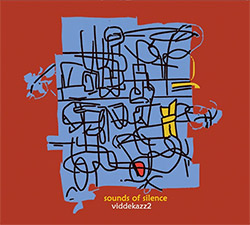
![Rolando, Tommaso / Andy Moor : Biscotti [CASSETTE w/ DOWNLOADS]](https://www.teuthida.com/productImages/misc4/36106.jpg)


![Electric Bird Noise / Derek Roddy: 8-10-22 [CD EP]](https://www.teuthida.com/productImages/misc4/35970.jpg)




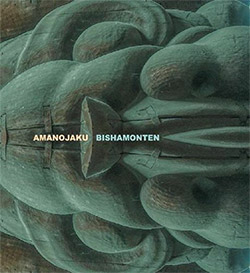
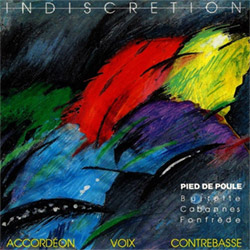
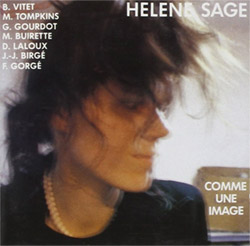
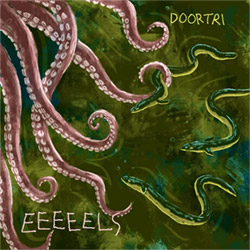
![Elephant9 : Mythical River [VINYL]](https://www.teuthida.com/productImages/misc4/34624.jpg)
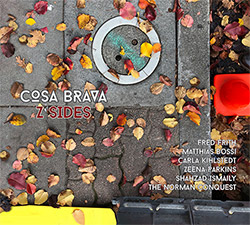

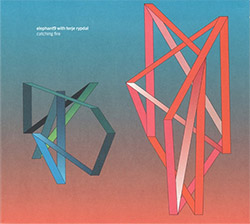
![Elephant9 with Terje Rypdal: Catching Fire [VINYL 2 LPs]](https://www.teuthida.com/productImages/misc4/35355.jpg)
![Deerlady (Obomsawin, Mali / Magdalena Abrego): Greatest Hits [VINYL]](https://www.teuthida.com/productImages/misc4/34876.jpg)





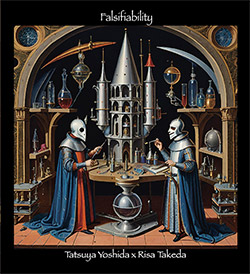

![Surplus 1980: Illusion of Consistency [CD]](https://www.teuthida.com/productImages/misc4/35069.jpg)
![Staiano, Moe: Away Towards the Light [VINYL + DOWNLOAD]](https://www.teuthida.com/productImages/misc4/35037.jpg)
![Coley, Byron: Dating Tips for Touring Bands [VINYL]](https://www.teuthida.com/productImages/misc4/17906.jpg)

![Lost Kisses: My Life is Sad & Funny [DVD]](https://www.teuthida.com/productImages/misc4/lostKissesDVD.jpg)